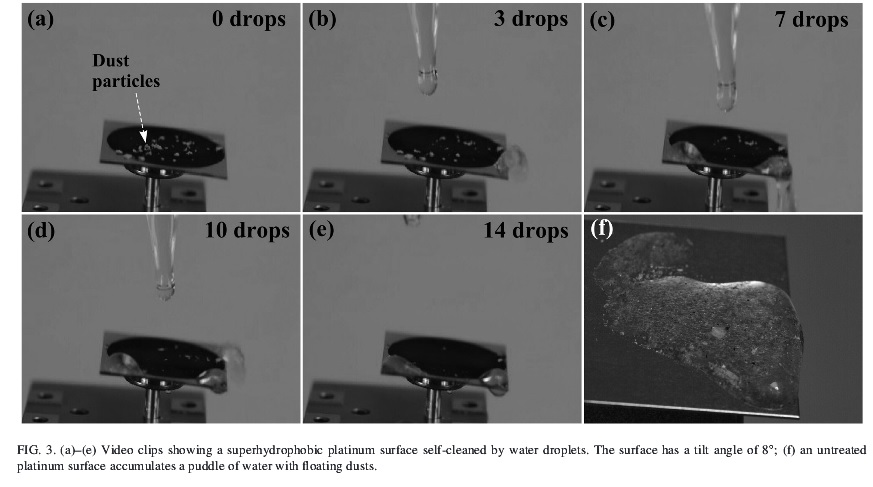It looks like you're using an Ad Blocker.
Please white-list or disable AboveTopSecret.com in your ad-blocking tool.
Thank you.
Some features of ATS will be disabled while you continue to use an ad-blocker.
13
share:
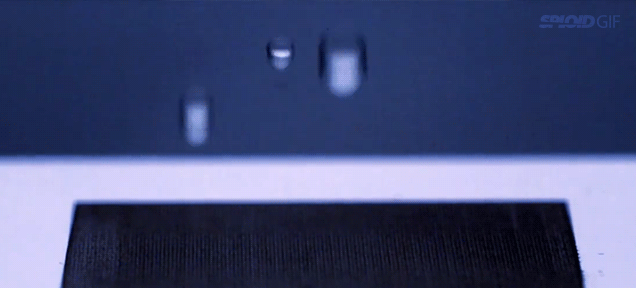
The scientist made the process in platinum, titanium, and brass
This can be huge, water is one of the most damaging substance to metals, corrosion kills any metal structure if not treated with some anticorrosion coating in a few years, these usually are usually hydrophobic polymers that due to several factors are not very efficient doing so. Nature have a different approach to generate hydrophobicity, instead of using hydrophobic materials it creates a very rough surface that prevent water for wetting most of the the surface as in the case of Lilly pads.
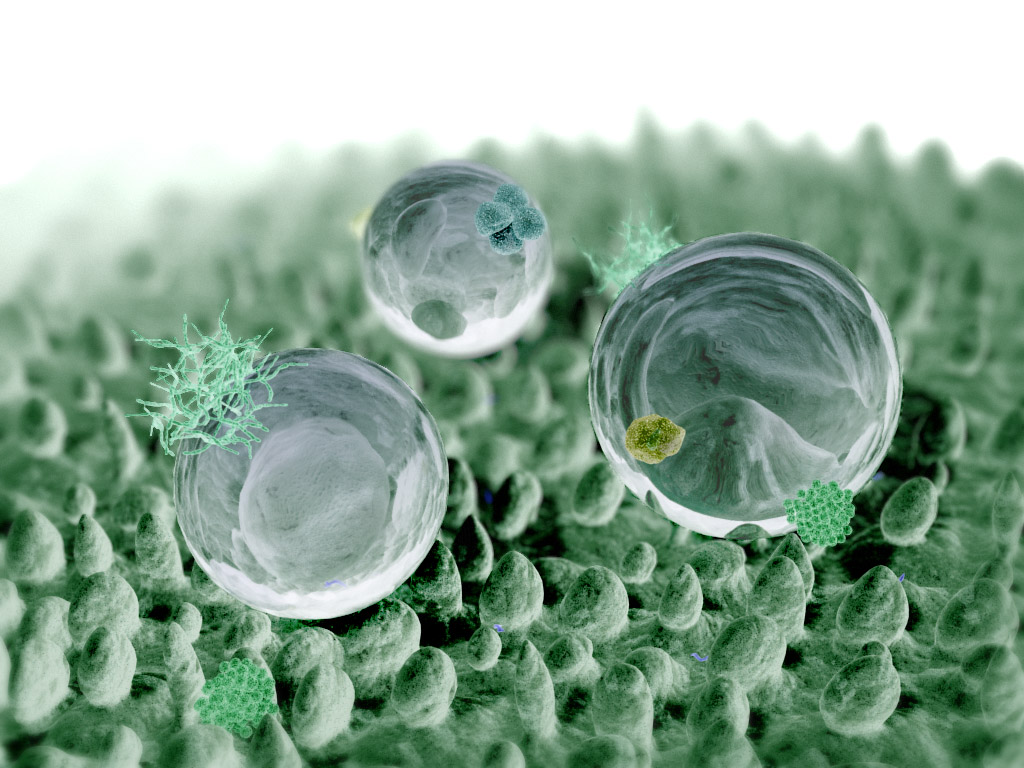
Lilly pads have a macro and micro structure that makes the leaves hydrophobic
Now scientist of the University of Rochester have created something similar with the use of femtosecond laser pulses to create the roughness necessary to allow the metal by itself to repel water.
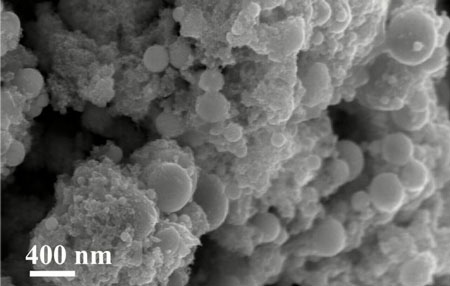
hierarchical structures on the platinum surface
This have very big potential applications in many industries, for example airplanes have the problem that in certain climates ice can be generated in the surface of the plane often with fatal consequences, with this kind of surface water cannot deposit in the surface and small ice particle generated on it are quickly removed as they earn mass.
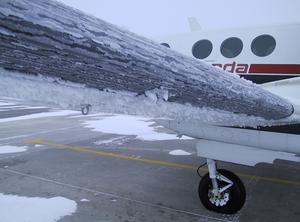
Soon this may be a thing of the past
New amazing metal is so hydrophobic it makes water bounce like magic
How quick would be a ship made like this?
The biggest problem is that the roughness have to be maintained i n order for it to work, erosion would quickly change the roughness of the surface so who knows if this really will get to something one day, that what i think at least, it all depends on how much the treatment last, perhaps a plane just need to be "burned" again every couple of years, or after one flight the surface properties completely change, 500 mph winds can be really abrasive.
But at lest something cool that shows we are progressing, slowly but we are, the same material we have been using for ages now can have a potential new use, just by the way we process it, not a new exotic material super rare in the world, just the same old metals we have been using for so long; perhaps some day we will be traveling the stars in wooden ships, its just that we don't know yet how to use it .
Multifunctional surfaces produced by femtosecond laser pulses
edit on 21-1-2015 by Indigent because: video fixed
a reply to: doompornjunkie
I don't think so, all this systems where there is an heterogeneous surface only means that the area that is in contact with the liquid is less than the total area following the Cassie's law, at the end what happens is something like this
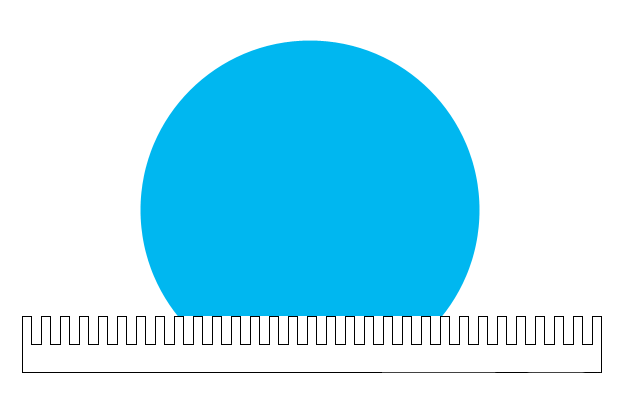
So still a big chunk of the surface is in contact with the liquid having friction and all, friction and wetting is not the same, in principle the smaller the area is the wetting will have a bigger impact in the friction, the larger the area is this impact decreases.
Wetting, adhesion and friction of superhydrophobic and hydrophilic leaves and fabricated micro/nanopatterned surfaces
Just as a little trivia this would be the best hydrophobic surface
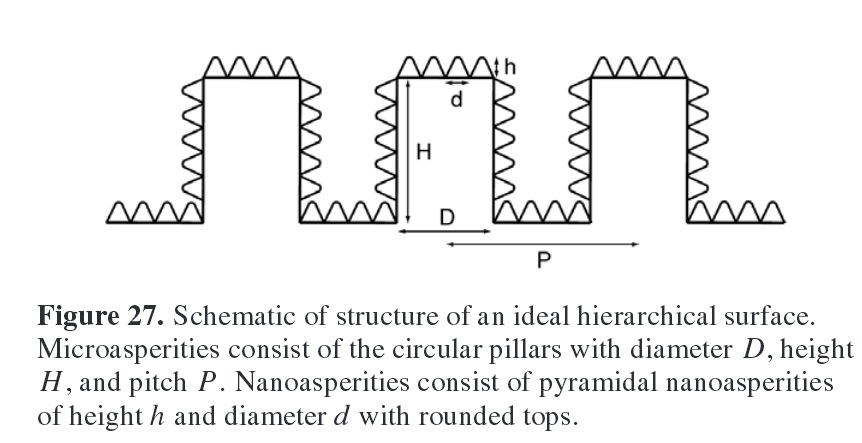
this is more or less what a plant can do and we cannot even imagine how to have such control on a surface, the ugly SEM image in the op is the closest we can get
I don't think so, all this systems where there is an heterogeneous surface only means that the area that is in contact with the liquid is less than the total area following the Cassie's law, at the end what happens is something like this

So still a big chunk of the surface is in contact with the liquid having friction and all, friction and wetting is not the same, in principle the smaller the area is the wetting will have a bigger impact in the friction, the larger the area is this impact decreases.
Wetting, adhesion and friction of superhydrophobic and hydrophilic leaves and fabricated micro/nanopatterned surfaces
Just as a little trivia this would be the best hydrophobic surface

this is more or less what a plant can do and we cannot even imagine how to have such control on a surface, the ugly SEM image in the op is the closest we can get
edit on 21-1-2015 by Indigent because: (no reason given)
a reply to: Akragon
I just look into it and submarines are coated in rubber like material to absorb sound
Anechoic tile
Joe´s like it fast, but real life Joes like it silent
I just look into it and submarines are coated in rubber like material to absorb sound
Anechoic tile
Joe´s like it fast, but real life Joes like it silent
Sweet find...I've been watching this nano tech too.
I would like to get ahold of it for some testing. See what it does to a boat hull when displacing water.
Would a boat with only part of the hull coated propel itself without any other power source?
...Path of least resistance and all. Might have the worlds most efficient propulsion.
I would like to get ahold of it for some testing. See what it does to a boat hull when displacing water.
Would a boat with only part of the hull coated propel itself without any other power source?
...Path of least resistance and all. Might have the worlds most efficient propulsion.
a reply to: doompornjunkie
Something tells me that the bullet would remove the hydrophobic texture on the way out of the barrel.
Cool thought, though.
Something tells me that the bullet would remove the hydrophobic texture on the way out of the barrel.
Cool thought, though.
a reply to: Indigent
Really fascinating stuff!
Imagine a metal roof with this texture. Hell, even just applying it to sattelite dishes would seemingly remove the issue with built-up ice and loss of signal.
Sadly, thought, I can't imagine the surface retaining the micro-texture for too long, though, especially if there is any direct friction being applied to the surface. I'd like to see that part of the equation addressed--it's durability. Obviously, it'd depend on the hardness of the metal, so maybe things would need to be titanium-plated after the texture is applies (or maybe before) in order for it to last. That seems like it could get extremely costly.
Also, since hydrodynamics and aerodynamics retain many similar physical properties, I wonder how this works at keeping compressed air off of moving vehicles to allow them to slice through the air better...much like the divits on a golf ball, but at the nano scale.
Another thought...imagine a water slide with this surface treatment!
Really fascinating stuff!
Imagine a metal roof with this texture. Hell, even just applying it to sattelite dishes would seemingly remove the issue with built-up ice and loss of signal.
Sadly, thought, I can't imagine the surface retaining the micro-texture for too long, though, especially if there is any direct friction being applied to the surface. I'd like to see that part of the equation addressed--it's durability. Obviously, it'd depend on the hardness of the metal, so maybe things would need to be titanium-plated after the texture is applies (or maybe before) in order for it to last. That seems like it could get extremely costly.
Also, since hydrodynamics and aerodynamics retain many similar physical properties, I wonder how this works at keeping compressed air off of moving vehicles to allow them to slice through the air better...much like the divits on a golf ball, but at the nano scale.
Another thought...imagine a water slide with this surface treatment!
My first thought is something like "but people want paint on their cars...anything we use that's metal has paint on it..."
Then, as I thought about it, I decided: "someone's going to find a way to put this idea into a paint or paint-like substance."
I wonder how long (including how long ago...) until it happens.
Then, as I thought about it, I decided: "someone's going to find a way to put this idea into a paint or paint-like substance."
I wonder how long (including how long ago...) until it happens.
originally posted by: theGleep
My first thought is something like "but people want paint on their cars...anything we use that's metal has paint on it..."
Then, as I thought about it, I decided: "someone's going to find a way to put this idea into a paint or paint-like substance."
I wonder how long (including how long ago...) until it happens.
Well then forget polishing the shiny new paint on your car as you would soon polish off the treated surface.
originally posted by: sayzaar
originally posted by: theGleep
Oh. Yeah...
So maybe our pretty colored cars will have to combine the superhydrophobic metals with that find about plants that make their colors from the size of surface anomalies instead of pigmentation. (I have no idea where to find the reference to that one...but it's out there. I think I even heard about it on ATS, even.)
new topics
-
How To Spot Fake U.F.O. Photos
Aliens and UFOs: 10 hours ago
top topics
-
LA Mayor Bass Demanded $49M in Additional LAFD Cuts One Week Before Wildfires
Mainstream News: 16 hours ago, 17 flags -
Just Came Across These Unusual Old UFO Pics
Aliens and UFOs: 14 hours ago, 7 flags -
Scary video of face in an abandoned house
Paranormal Studies: 12 hours ago, 5 flags -
How To Spot Fake U.F.O. Photos
Aliens and UFOs: 10 hours ago, 5 flags -
Carry On!
Short Stories: 17 hours ago, 3 flags -
Sepultura - Territory - With New Drummer Greyson Nekrutman
Music: 17 hours ago, 3 flags
active topics
-
Trump says ownership of Greenland 'is an absolute necessity'
Other Current Events • 166 • : Lazy88 -
Gravitic Propulsion--What IF the US and China Really Have it?
General Conspiracies • 40 • : Lazy88 -
Judge rules president-elect Donald Trump must be sentenced in 'hush money' trial
US Political Madness • 122 • : JadedGhost -
Fire insurance in LA withdrawn months ago
General Conspiracies • 39 • : Flyingclaydisk -
Los Angeles brush fires latest: 2 blazes threaten structures, prompt evacuations
Mainstream News • 395 • : Flyingclaydisk -
Archbisop Vigano Warns of Deep State and Deep Church
New World Order • 12 • : FlyersFan -
This should be plastered all over the airwaves
Mainstream News • 56 • : Flyingclaydisk -
Oh, Good Gosh. “Kremlin Warns Stay Away from Greenland.”
World War Three • 33 • : Dalamax -
How To Spot Fake U.F.O. Photos
Aliens and UFOs • 4 • : SteamyAmerican -
Just Came Across These Unusual Old UFO Pics
Aliens and UFOs • 6 • : NoCorruptionAllowed
13

